Search results for: 'Stone'
-
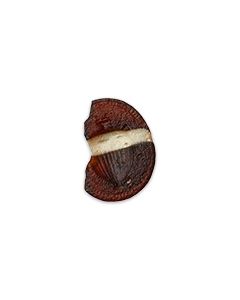 Roman intaglio with vase
Roman intaglio with vaseThe Roman ring insert is made of beautiful dark purple glass paste with a white band. It shows a bulbous vase with taeniae.
Price: on request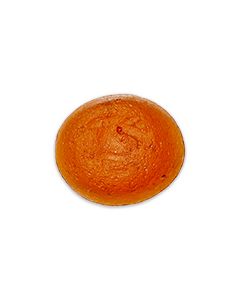 Roman intaglio
Roman intaglioNice orange, translucent glass paste, imitating carnelian. From the Professor Brosch collection of ancient gems.
Price: on request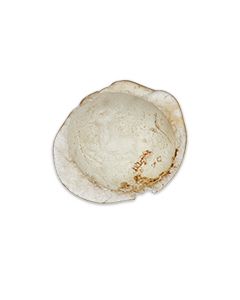 Roman intaglio with bull
Roman intaglio with bullThe Roman ring insert is made of colourless glass paste that imitates rock crystal. It depicts a jumping bull.
Price: on request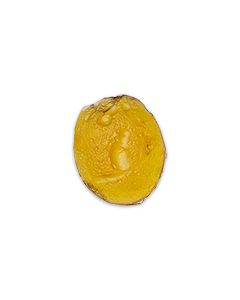 Roman intaglio with bird
Roman intaglio with birdThe glass paste shows a bird on a branch. From the Professor Brosch collection of ancient gems.
Price: on request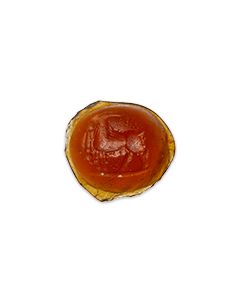 Roman intaglio with billy goat
Roman intaglio with billy goatThe Roman ring insert is made of orange glass paste that imitates carnelian. It depicts a horned quadruped.
Price: on request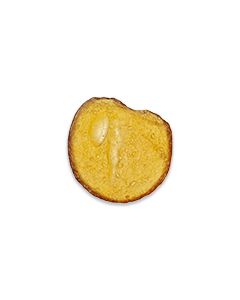 Roman intaglio with young man and shield
Roman intaglio with young man and shieldLight orange glass paste showing a young man holding his round shield to the side.
Price: on request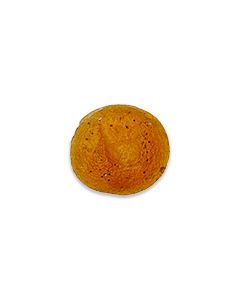 Roman intaglio
Roman intaglioNice orange, translucent glass paste, imitating carnelian. From the Professor Brosch collection of ancient gems.
Price: on request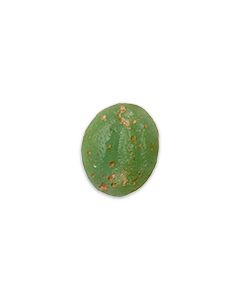 Roman intaglio
Roman intaglioBright green glass paste with standing figure. From the Professor Brosch collection of ancient gems.
Price: on request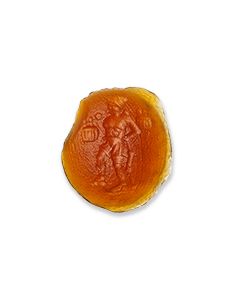 Roman intaglio with Odysseus as a beggar
Roman intaglio with Odysseus as a beggarThe roman intaglio shows an important scene from the Odyssey in which Odysseus returns home after his long journey. The hero is disguised as a beggar. He wears his pilos hat and is resting his weight on a stick.
Price: on request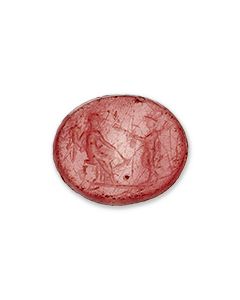 Roman intaglio with Hermes and Tyche
Roman intaglio with Hermes and TycheThe ancient intaglio from Roman times shows a scene between the two gods. From the Professor Brosch collection of engraved gems.
Price: on request Roman intaglio with hippocampus
Roman intaglio with hippocampusBeautiful depiction of the popular mythical creature from Greek and Roman art. The orange glass paste copies an engraved carnelian gem. From the Roman period.
Price: on request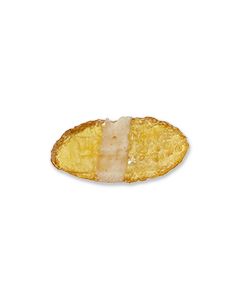 Roman intaglio
Roman intaglioRing insert made from beautiful, bright yellow glass paste. From the Professor Brosch collection of ancient gems.
Price: on request Lapis lazuli head of a pharao
Lapis lazuli head of a pharaoExtremely rare finely carved royal head made of blue stone with bronze beard. Late Period to Ptolemaic period of ancient Egypt.
€3,450 Mesopotamian cylinder seal
Mesopotamian cylinder sealMade of beautiful red stone, worked with the drill. From the transitional period between Chalcolithic and Early Bronze Age in Mesopotamia.
Price: on request Campanian red figure Hydria with thermoluminescence analysis
Campanian red figure Hydria with thermoluminescence analysisFrom the workshop of the Branicki painter, 330 - 320 BC, Cumae. Impressive large vase in very nice condition.
Price: on request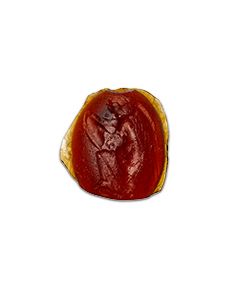 Roman intaglio with goddess of victory
Roman intaglio with goddess of victoryThe glass paste features a famous depiction of Victoria writing the names of victors in battle on a large shield. The motif reiterates a 1st century bronze statue.
Price: on request Dark Roman glass paste with white band
Dark Roman glass paste with white bandThe Roman ring insert is in excellent condition. The small-format motif is not clearly identifiable, but it may show a head.
Price: on request Flintwerkzeug aus Großbritannien
Flintwerkzeug aus GroßbritannienWerkzeug aus Flintstein, mit deutlichen, steinzeitlichen Bearbeitungsspuren. Britisches Neolithikum, möglicherweise früher.
Price: on request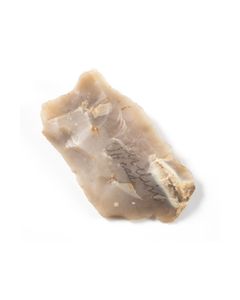 Flintwerkzeug aus Großbritannien
Flintwerkzeug aus GroßbritannienWerkzeug aus Flintstein, mit deutlichen, steinzeitlichen Bearbeitungsspuren. Britisches Neolithikum, möglicherweise früher.
Price: on request Flintwerkzeug aus Großbritannien
Flintwerkzeug aus GroßbritannienWerkzeug aus Flintstein, mit deutlichen, steinzeitlichen Bearbeitungsspuren. Britisches Neolithikum, möglicherweise früher.
Price: on request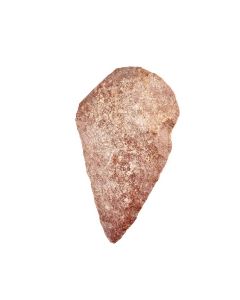 Paleolithic hand axe
Paleolithic hand axeThe universal tool of the older Stone age. It could be used as a borer or a cutter. Approx. 500,000 to 200,000 BC.
Price: on request Hand axe from Galilee
Hand axe from GalileeBig paleolithic hand axe. The universal stone age tool could be use as a borer or cutting tool. Around 500,000 to 200,000 BC.
Price: on request Roman glass paste with depiction of a warrior in armor
Roman glass paste with depiction of a warrior in armorThe piece is based in a high quality gem stone and has been molded with all details. Oval shape and nice colour sparkling in red and purple.
Price: on request Egyptian heart scarab
Egyptian heart scarabBig beetle stone from the Late Period of Ancient Egypt. Scarabs of this kind have been placed next to the heart on mummies. Nice mint green fayence.
Price: on request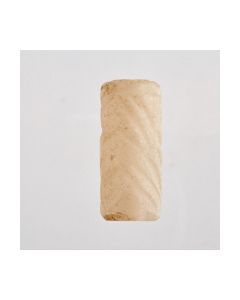 Mesopotamian cylinder seal with abstract scene
Mesopotamian cylinder seal with abstract sceneThe milky white stone is engraved with a scene that stands out by its high degree of abstraction. Late Uruk to Djemdet Nasr period, around 3000 BC.
Price: on request Scarab with pattern of circles
Scarab with pattern of circlesThe beetle stone bears a popular motive of the Middle Empire. A nice example of its kind. This scarab is described in the catalogue of Irène Gautier-Vodoz.
Price: on request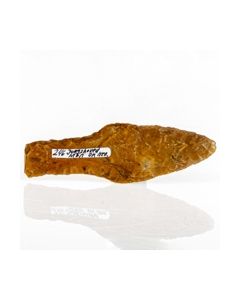 Scandinavian flint dagger
Scandinavian flint daggerNicely worked flint dagger from the transitional period between Late Neolithic and Early Bronze Age. Jungshoved on the Danish Island of Moen was the find spot.
Price: on request Beaker of the Bell Beaker culture
Beaker of the Bell Beaker cultureThe voluminous body has the typical shape of vessels from the Bell Beaker culture. It has been made during the transitioning period between Stone Age and Bronze Age.
Price: on request Neolithic dagger
Neolithic daggerNicely worked flint dagger of type III. Sprove on the Danish Island of Moen was the find spot. 1700 to 1500 BC.
Price: on request Cone-shaped stamp seal with star of Ishtar
Cone-shaped stamp seal with star of IshtarThe seal depicts a tree of life with a rhomb and eight-pointed star, symbol of Ishtar. 7th to 6th century BC.
Price: on request Old Babylonian cylinder seal
Old Babylonian cylinder sealThis Old Babylonian seal with a worship scene is made from lapis lazuli, a very rare choice for this period.
Price: on request Vessel of the Linear Pottery culture
Vessel of the Linear Pottery cultureThe beautifully decorated tableware or cookware was made by the earliest peasants of Central Europe, the Late Stone Age Linear Band Ware settlers. A find from Southern Germany in great condition.
Price: on request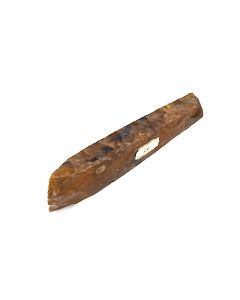 Neolithic axe head from Luetzow in Northern Germany
Neolithic axe head from Luetzow in Northern GermanyNice polished axe from brown flint. It was found more than 100 years ago near the town of Luetzow.
Price: on request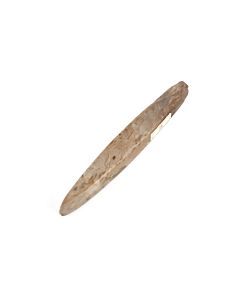 Neolithic chisel from Northern Germany
Neolithic chisel from Northern GermanyElegantly shaped chisel with two polished sides. Made of grey flint. Approx. 3400 to 2400 BC.
Price: on request Achaemenid stamp seal
Achaemenid stamp sealThis beautiful stamp seal is from the First Persian Empire of the Achaemenids or from parts under Greek control. 5th to 4th cent. BC.
Price: on request Early flat axe from Judea
Early flat axe from JudeaInteresting bronze axe head from Early Bronze Age. The piece was found in Judea.
Price: on request

